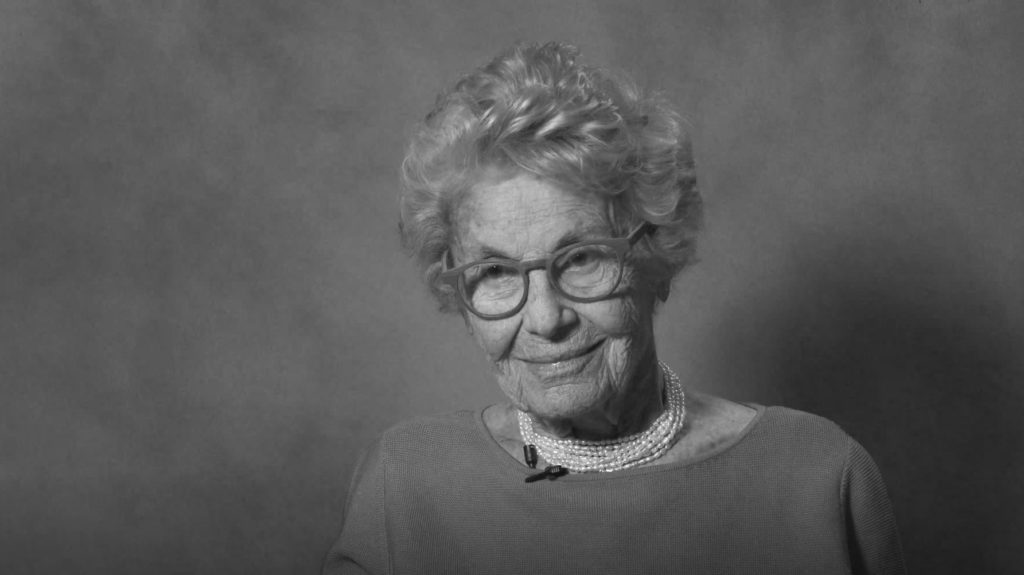Hedda Kleinfeld Schachter was born Feb. 5, 1924, in Vienna, Austria. A doyenne of New York retail fashion, she was known as owner, with her husband, Jack, and buyer of the largest, most exclusive bridal store in the country — Kleinfeld’s.
She set new trends and launched designers, such as Donna Karan. And whenever she made an appointment at the showrooms of Oscar de la Renta, Calvin Klein, or Priscilla of Boston, the red carpet was rolled out for her, and the doors were closed to other buyers.
Isadore Kleinfeld was an Austrian Jewish immigrant who opened a furrier business shortly after arriving in Brooklyn in 1941. His wife, a milliner for Lily Daché and Rosenthal, designed hats and evening gowns. No gown cost less than $200 at a time when a good dress cost $12.50, but price didn’t matter if it had the Kleinfeld’s label.
Rather than shop on Fifth Avenue, affluent Manhattan women now flocked to Kleinfeld’s 35,000 square-foot flagship store on Third Avenue in Brooklyn.
In 1968, Kleinfeld’s introduced bridal. Brides-to-be traveled from all over the world to choose their wedding and bridesmaids’ dresses.
Aunt Hedda and Uncle Jack sold I. Kleinfeld & Son in 1990 and moved to Manhattan. Uncle Jack was 87 when he died in 2008. Aunt Hedda is 98 and now lives in New York.
Two years ago, Aunt Hedda donated her family letters and papers from the Holocaust period and was filmed by the U.S. Holocaust Memorial Museum for its oral/visual archives.
Aunt Hedda was the eldest of the two daughters born to Austrian Jews. Her mother, Regina, was born in 1895, the second-youngest of nine children in a farming family from Stanislav, today part of Ukraine. Hedda’s father, Isadore Kleinfeld, also from Stanislav, was born in 1844 and was one of five children. Regina was a mischling, the Nazi term for “half-Jew,” the offspring of a Jewish and non-Jewish person. Isadore’s parents were both from highly educated, cultured, and affluent Jewish families.

Video image still courtesy of United States Holocaust Memorial Museum
Hedda and her sister were born in Vienna. The girls attended Novara Gymnasium, a private school. Education was important to Hedda’s parents, and they exposed their girls to concerts, opera, films and other cultural events. For her tenth birthday, Hedda was given a black baby grand piano. It was the thing she missed most when her family was forced to flee their elegant home in Vienna.
The world changed for Hedda, then 14, on March 12, 1938 — Anschluss Österreichs, the annexation of Austria into Nazi Germany. Hedda remembers Nazi flags flying above the non-Jewish shops.
“I knew what they were doing in Germany,” she recalled. “I was not surprised. I was angry. Non-Jews knew they could no longer associate with us. My sister and I could no longer go to school. My girlfriends couldn’t get in touch with us. It was dangerous for Jews to go out, day or night. If you were caught, the Nazis made people wash the streets with toothbrushes.”
Then, on Nov. 9 and 10, came Kristallnacht, “the Night of Broken Glass,” when the Sturmabteilung, Nazi paramilitary forces, ransacked Jewish-owned stores, buildings, and synagogues. Jewish men, including Isadore, were seized. He was transported to Dachau, the first Nazi concentration camp in Germany.
“This is not going to last,” a neighbor told Regina. “Hitler’s not going to stay.”
But Regina knew she had to get her family out. She wrote to her cousin, who had emigrated to New Jersey and had become a naturalized American citizen years earlier, and he sent sponsorship letters and funds to get visas for the Kleinfelds.
Leaving her daughters in Vienna, Regina took the train to Munich to plead with Nazi authorities for her husband’s release. This was, perhaps, the only sliver of time when this was remotely possible. But 11 days later, after four months in Dachau, Isadore was released on the merit of his service as a high-ranking officer in World War I.
Told he had 14 days to get out of Vienna, he reunited with his family, took the train to Hamburg, and boarded the ship Orinoko for Cuba, where they remained for two years. In 1939, they sailed into New York Harbor.
They were among the few fortunate ones. Fate, luck, and God were with them throughout their harrowing escape. Aunt Hedda is like so many who survived the Holocaust, gaining inimitable strength and perseverance that, like a star, shone throughout their lives — and upon us all who were privileged to know, love, and be loved by them.
To listen more about her story, please visit www.ushmm.org.

